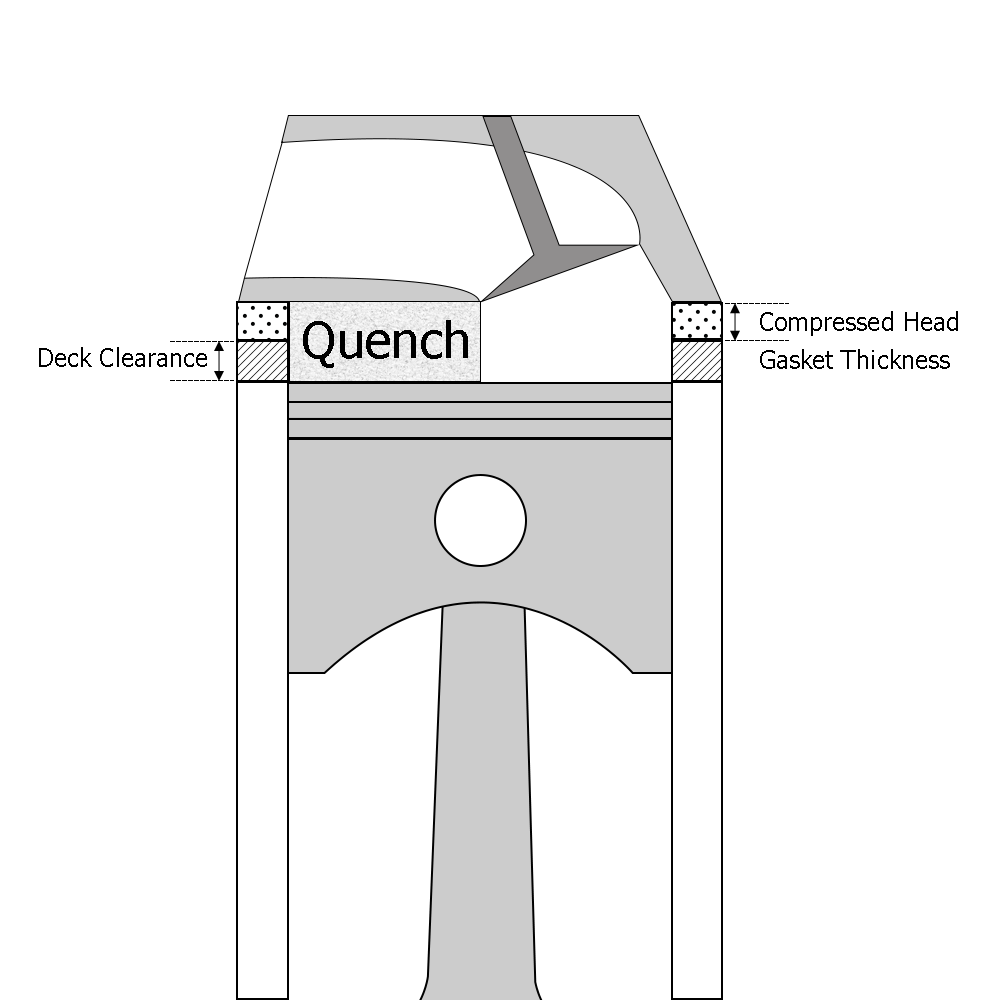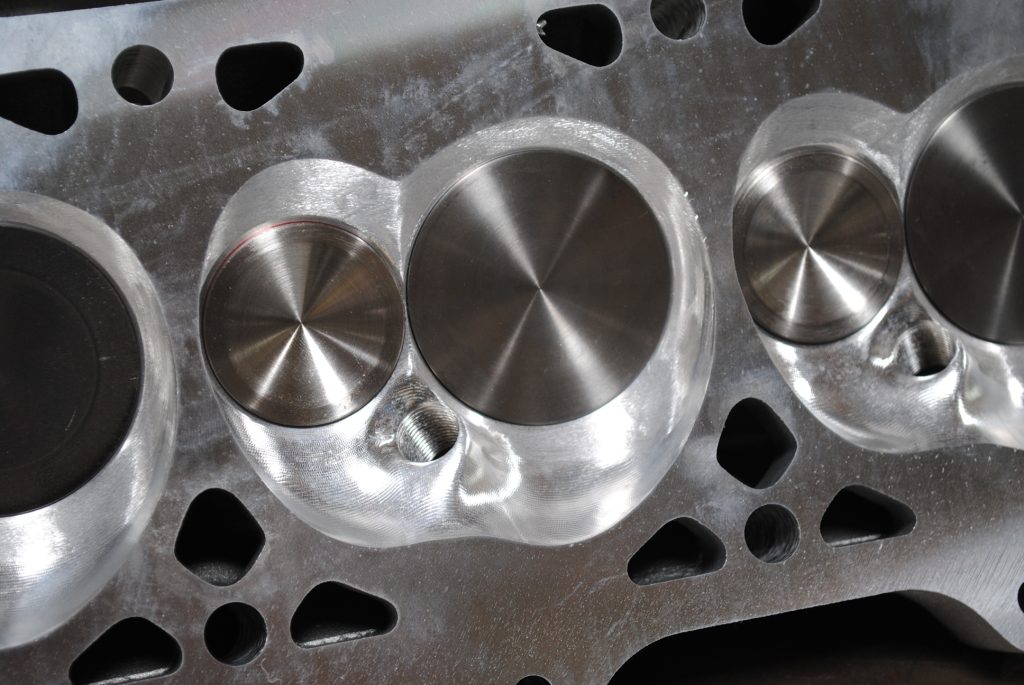Q: What is engine quench?
…
A: Quench is the distance between the top of the piston at TDC and the cylinder head surface. It is also called “squish” or “piston-to-head clearance.”

How is engine quench measured?
Quench is a calculated dimension. It uses the following formula:
Quench = Deck Clearance + Compressed Head Gasket Thickness
How does engine quench affect performance?
The right amount of quench can promote fast, complete burn of the air/fuel mixture. It creates turbulence, which forces the air/fuel mixture toward the spark plug. This reduces the possibility of detonation. It also leads to cleaner emissions.
What is the right amount of engine quench?
Engine quench should be as tight as possible, without the piston contacting the head. Recommended quench depends on your max rpm and the type of connecting rods you use.
Tech Notes
- Aluminum rods get longer as they get hotter. Increased quench will prevent the piston from contacting the head.
- Don’t run more than 0.060 in. quench trying to lower compression ratio. This will slow the combustion process and could cause detonation.
…
This is another in a series of weekly Q&A Mailbag sessions with Summit Racing‘s tech department, in which there are hundreds more. Click here to see them all.


[…] Q: What is engine quench? … A: Quench is the distance between the top of the piston at TDC and the cylinder head surface. It is also called “squish” or […] Read full article at http://www.onallcylinders.com […]
Thanks, I always referred it as the Glory Hole
That doesn’t take a rocket scientist to figure that out!!! I build very good engines to fit what ever the customer wants the engine for.
This is 100% wrong. This is called squish. Quench is the region between the cylinder wall and the bulk volume of the cylinder volume that doesn’t combust, pretty much like the ladenfrost effect.
I think its quite funny how you’re ‘explaining’ something, but you’ve got it wrong.